Auscultation
Early chest auscultation techniques and stethoscopes are featured.


Overview
Early chest auscultation techniques and stethoscopes are featured in this gallery.


Rene Laennec
The French physician, Rene Theophile Hyacinthe Laennec (1781-1826), is credited with inventing the stethoscope in 1816. His device was a monaural wooden cylinder.
The binaural stethoscope, invented in 1851, is credited to Arthur Leared, a physician from the United Kingdom.
The binaural stethoscope, invented in 1851, is credited to Arthur Leared, a physician from the United Kingdom.


Laennec's 1819 Text
In 1819, R.T. H. Laennec's first text on auscultation was published in Paris.
Image from National Library of Medicine's Digital Collection

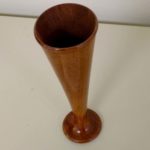
Monaural Stethoscope
This monaural stethoscope was from circa 1860-1870. The stethoscope is carved from cedar.
Image from Tina Pitt


Modified Laennec
This schematic shows a modified version of Laennec's stethoscope. The slight modifications which appeared in an 1839 text were implemented to make the instrument "lighter, smaller, and more portable."
The illustration was from a text by Adam Raciborski entitled "Nouveau manuel complet d'auscultation et de percussion" or "An Elementary Treatise on Auscultation and Percussion".
The illustration was from a text by Adam Raciborski entitled "Nouveau manuel complet d'auscultation et de percussion" or "An Elementary Treatise on Auscultation and Percussion".
Image from the National Library of Medicine Digital Collection (63650850R)


1896 Stethoscope & Frame
Several stethoscopes were designed earlier in the 1800s but this one was unique in that it incorporated a headpiece for the physician that supported the stethoscope chest piece so the physician's hands would be free to perform percussion and "would also aid in conveying sounds from the patient to the examiner." The patent was awarded to Albert Mitchell on March 3, 1896.

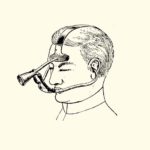
DeLee Stethoscope with Headband
This image appeared in a 1926 catalogue of "Standard Surgeons Instruments and Apparatus."


Bowles Stethoscope
In 1897, Robert C. M. Bowles applied for a patent for a new stethoscope design. The patent was awarded January 25, 1901.
Bowle's stethoscope consisted of a flat metal chest piece with a shallow concave chamber covered by a flexible
diaphragm. The chest piece connected to rubber tubing which connected to the ear pieces. One advantage cited in the patent application was that the device could be used without requiring patients to disrobe.
It was manufactured by G. P. Pilling & Son in Philadelphia, Pennsylvania.
Bowle's stethoscope consisted of a flat metal chest piece with a shallow concave chamber covered by a flexible
diaphragm. The chest piece connected to rubber tubing which connected to the ear pieces. One advantage cited in the patent application was that the device could be used without requiring patients to disrobe.
It was manufactured by G. P. Pilling & Son in Philadelphia, Pennsylvania.


1916 Breath Sound Assessment
The caption for this vintage photo stated:
"Listening to Chest Sounds with the Ear to the Back: Germany 1916
The stethoscope, the first of modern medicine's necessary tools, was invented in 1818 by Rene Laennec, M.D. (1781-1826). It revolutionized diagnosis and treatment of chest disease and sparked the rise of the French School of Medicine. Because heart and lung sounds were magnified Laennec was able to establish a disease classification system based on the various tones detected. The use of this instrument also enabled the physician to remain at a safer distance from an infected patient. In this photograph, taken in the throes of World War I, a military physician places his head on a patient's back to listen to lung sounds. Prior to the Laennec stethoscope chest sounds were heard by simply placing the ear against the chest or back. As a quick screening method it worked for centuries. European physicians used this method and Laennec's simple tube stethoscope, well into the 1940s. An American physician, Dr. Cammann of New York, invented the binaural stethoscope in 1855. This advanced instrument was largely ignored by European physicians, perhaps because of its American origin. In the nineteenth century it was the American who traveled to Europe to learn the latest techniques. European physicians only came to the United States as invited dignitaries. It was not until after World War I that America became the acknowledged world leader in medical research, technique and education."
"Listening to Chest Sounds with the Ear to the Back: Germany 1916
The stethoscope, the first of modern medicine's necessary tools, was invented in 1818 by Rene Laennec, M.D. (1781-1826). It revolutionized diagnosis and treatment of chest disease and sparked the rise of the French School of Medicine. Because heart and lung sounds were magnified Laennec was able to establish a disease classification system based on the various tones detected. The use of this instrument also enabled the physician to remain at a safer distance from an infected patient. In this photograph, taken in the throes of World War I, a military physician places his head on a patient's back to listen to lung sounds. Prior to the Laennec stethoscope chest sounds were heard by simply placing the ear against the chest or back. As a quick screening method it worked for centuries. European physicians used this method and Laennec's simple tube stethoscope, well into the 1940s. An American physician, Dr. Cammann of New York, invented the binaural stethoscope in 1855. This advanced instrument was largely ignored by European physicians, perhaps because of its American origin. In the nineteenth century it was the American who traveled to Europe to learn the latest techniques. European physicians only came to the United States as invited dignitaries. It was not until after World War I that America became the acknowledged world leader in medical research, technique and education."
From a collection shared by Aracely Bigelow


1919 Monaural Stethoscope
In this 1919 photo, the physician is shown using a monaural stethoscope.
The caption on the photo stated "The monaural stethoscope was invented in 1818 by French physician Rene Laennec. The device remained in use in Europe until the 1940s. The physician was in close contact with the patient, a detriment when patients had severe, contagious infectious disease."
The caption on the photo stated "The monaural stethoscope was invented in 1818 by French physician Rene Laennec. The device remained in use in Europe until the 1940s. The physician was in close contact with the patient, a detriment when patients had severe, contagious infectious disease."
Image from a collection shared by Aracely Bigelow


1922 Ascultation by Ear
Although the stethoscope had been invented over a century earlier, many physicians continued to listen to breath and heart sounds by placing an ear directly on the patient's chest as shown in this 1922 photo.
From a collection shared by Aracely Bigelow
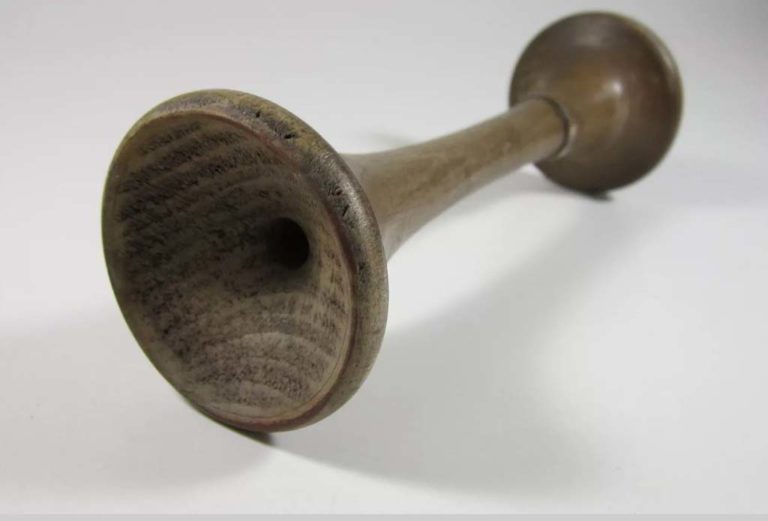

1925 Monaural Stethoscope
A wooden monaural stethoscope from 1925 is pictured.
Image from Felix Khusid


1927 Monaural
A wooden monaural stethoscope from 1927 is pictured.
Image from Felix Khusid


1930s Metal Monaural Stethoscope
This metal monaural stethoscope, circa 1930s, was used by the Argentine army and is owned by Felix Khusid.
Image from Felix Khusid


Metal Monaural Stethoscope
Issued to Argentine army medics in the 1930s, this three piece, metal monaural stethoscope is shown disassembled.
Image from Felix Khusid


Percussion circa 1920
Percussion has been a critical part of chest disease diagnosis since the early nineteenth century.
The caption on this photo stated: "This physician in a French chest clinic is percussing (tapping) the patient's back to evaluate by the resonance the presence or absence of fluid or other mass. The first practical diagnostic tool in examining the chest - percussion was developed by Viennese physician, Leopold Auenbrugger, M.D. (1722-1809). In his 1761 text Inventum Novum Ex Percussione he noted the sound of tapping on the chest "produces analogous results to those observed by striking a cask, for example, in different degrees of emptiness or fullness." Auenbrugger verified his findings with postmortem examinations and experimentation with cadavers. He filled their lungs with various amounts of fluid and evaluated the sounds produced. Despite the translation of his text into French by Roziere de la Chassagne, M.D. in 1770, his exemplary research did not gain immediate favor. The value of percussion finally was heralded in the 1808 classic by Jean Nicholas Corvisart, M.D. (1755-1820). With Dr. Rene Laennec's invention of the stethoscope in 1818 and his publication of two volumes on chest disease, 1819 and 1826, the main diagnostic tools for diagnosis of chest disease were established."
The caption on this photo stated: "This physician in a French chest clinic is percussing (tapping) the patient's back to evaluate by the resonance the presence or absence of fluid or other mass. The first practical diagnostic tool in examining the chest - percussion was developed by Viennese physician, Leopold Auenbrugger, M.D. (1722-1809). In his 1761 text Inventum Novum Ex Percussione he noted the sound of tapping on the chest "produces analogous results to those observed by striking a cask, for example, in different degrees of emptiness or fullness." Auenbrugger verified his findings with postmortem examinations and experimentation with cadavers. He filled their lungs with various amounts of fluid and evaluated the sounds produced. Despite the translation of his text into French by Roziere de la Chassagne, M.D. in 1770, his exemplary research did not gain immediate favor. The value of percussion finally was heralded in the 1808 classic by Jean Nicholas Corvisart, M.D. (1755-1820). With Dr. Rene Laennec's invention of the stethoscope in 1818 and his publication of two volumes on chest disease, 1819 and 1826, the main diagnostic tools for diagnosis of chest disease were established."
From a collection shared by Aracely Bigelow


Littmann Stethoscope
On August 23, 1965, David Littmann filed a patent application for a stethoscope designed with a compact, lightweight chestpiece. The patent was awarded on October 4, 1966.
Image from US Patent and Trademark Office archives


Auscultation
Early in their educational programs, student respiratory therapists practice auscultation to recognize normal, abnormal, decreased and absent breath sounds.


Learning to Auscultate
A student respiratory therapist observes auscultation of a mechanically ventilated patient.
Image from KUMC Respiratory Care Program Archives


Pediatric Auscultation
This photo shows a student respiratory therapist listening to breath sounds on a pediatric patient.
Image from KUMC Respiratory Care Program Archives
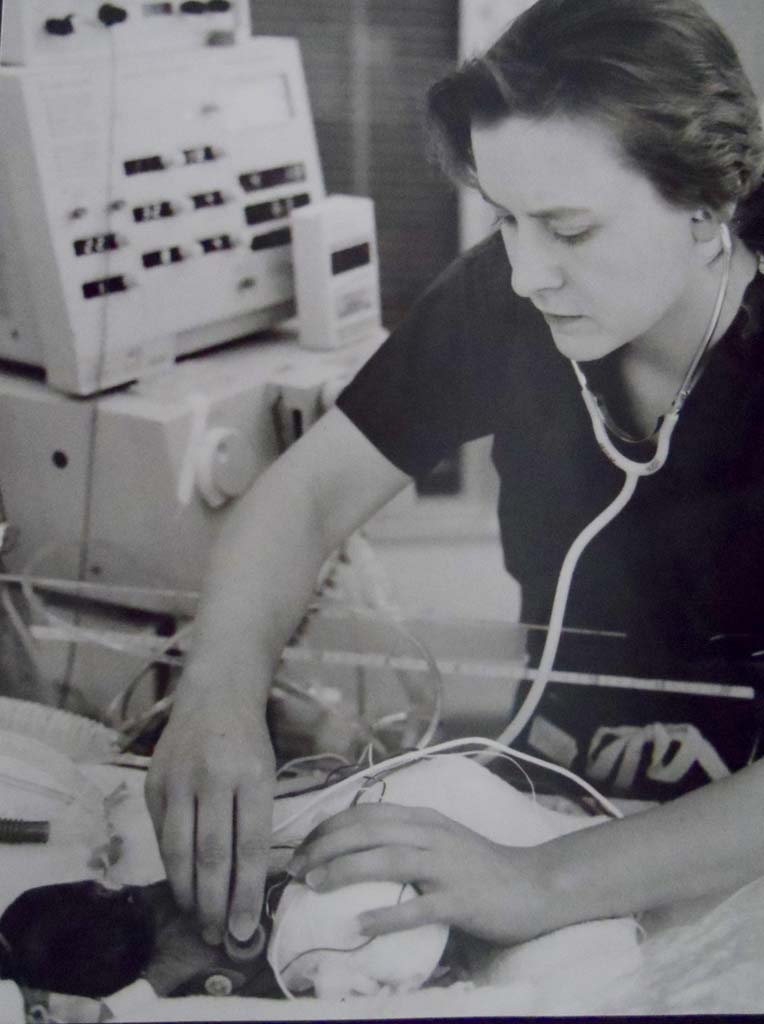

Auscultation in the NICU
In this photo, a respiratory therapist is shown auscultating a neonate's breath sounds.
Image from KUMC Respiratory Care Program Archives

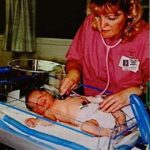
Auscultation of a Newborn
A respiratory therapist is shown listening to breath sounds on a newborn.
Image from Karen Schell


Monitoring Breath Sounds
During a neb treatment, a respiratory therapy student is shown monitoring her patient's breath sounds.
Image from the archives of KUMC Respiratory Care Program


Images to share?
Please contact us if you have images to contribute for this gallery.